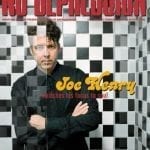The Nashville Sound: Bright Lights And Country Music
In 1970, Atlanta Journal reporter Paul Hemphill, having grown up with country music, published his first book, long considered the gold standard for non-academic country writing. The Nashville Sound: Bright Lights And Country Music captured the music and artists in the tumultuous late 1960s, his prose reflecting the compelling immediacy of the best New Journalism. Its ambience directly informed several long-gone country publications, and to this day, country journalists, particularly older ones, admire the book’s inspirational qualities, particularly since it captures country amid the late ’60s Vietnam-era culture wars.
While Hemphill vividly portrayed Nashville’s late ’60s icons — the Opry, Tootsie’s, Cash taping his ABC TV show, Atkins, Acuff, WSM, Owen Bradley, etc. — he didn’t ignore the wariness some Nashville residents held toward the music and the industry it spawned. He found an embittered DeFord Bailey, the Opry’s black harmonica virtuoso, shining shoes, and probed Tex Ritter’s deep social conservatism. Re-reading the profile of then-rising star John Wesley Ryles, it’s ironic to note Ryles is now a first-call Music Row backup and demo singer.
It wasn’t enough for the author to profile Buck and Merle in Bakersfield and Glen Campbell in Hollywood. Hemphill’s reach extended to obscure North Carolina stringband musician Arthur Young and small-time Georgia impresario Billy Dilworth. A chapter on Bill Anderson’s early 1969 northeastern tour remains a high point. The infuriated bus driver describes a traffic cop issuing him a warning and, discovering the occupants were country musicians, cracked wise about “that hoedown stuff.” Detailing a patriotic segment of Anderson’s stage show that would score in today’s red states, Hemphill notes the singer judiciously toned down jabs at “people with long hair knocking our country” at a show in more liberal Boston.
Reprinted with original typeface, pagination and index, the book opens with a new introduction that essentially stands as a requiem. Hemphill laments surviving acts who, if they record at all, no longer do so on major labels, though declaring Johnny Cash among these is incorrect (Rick Rubin wasn’t exactly chopped liver). Beyond that, The Nashville Sound, so cutting-edge and contemporary 36 years ago, now a series of historical moments, essays and vignettes, still lives and breathes, having lost none of its power to move and amuse and enlighten.




